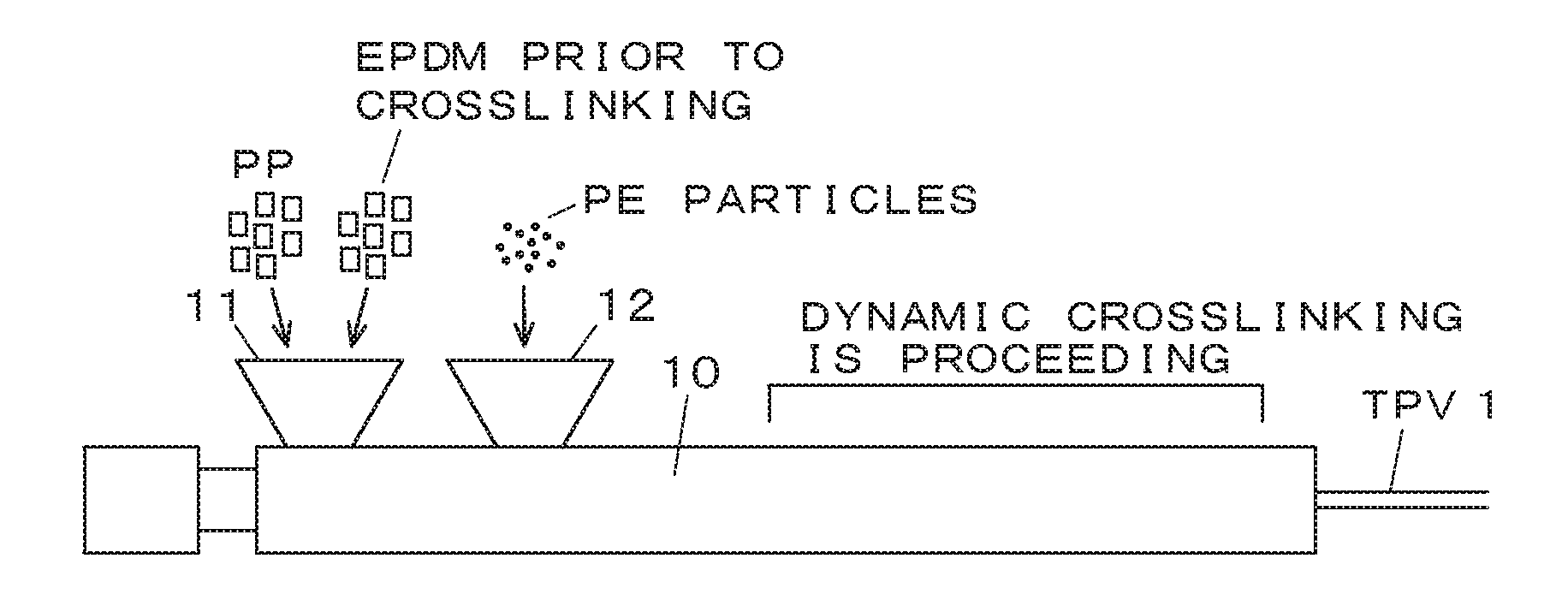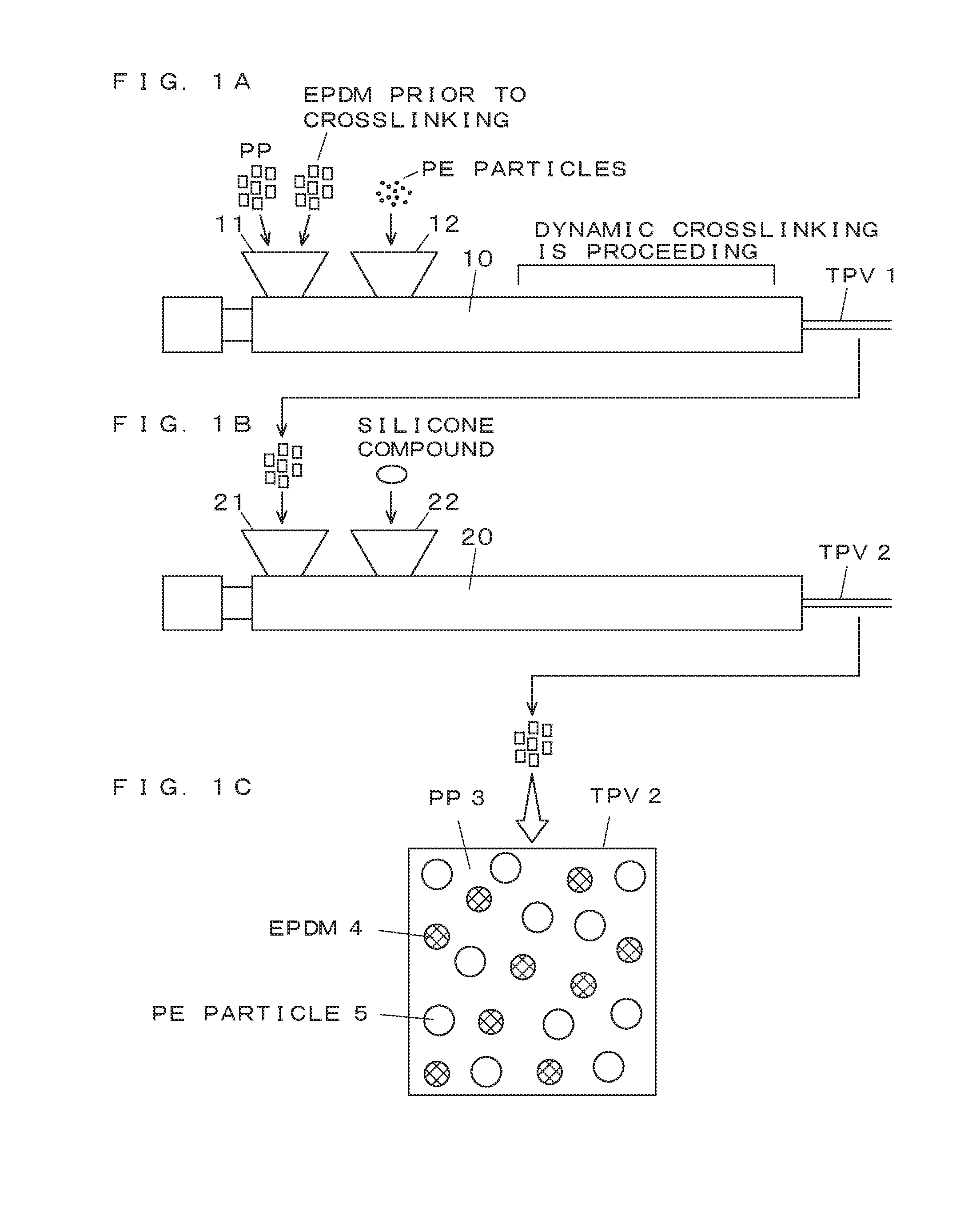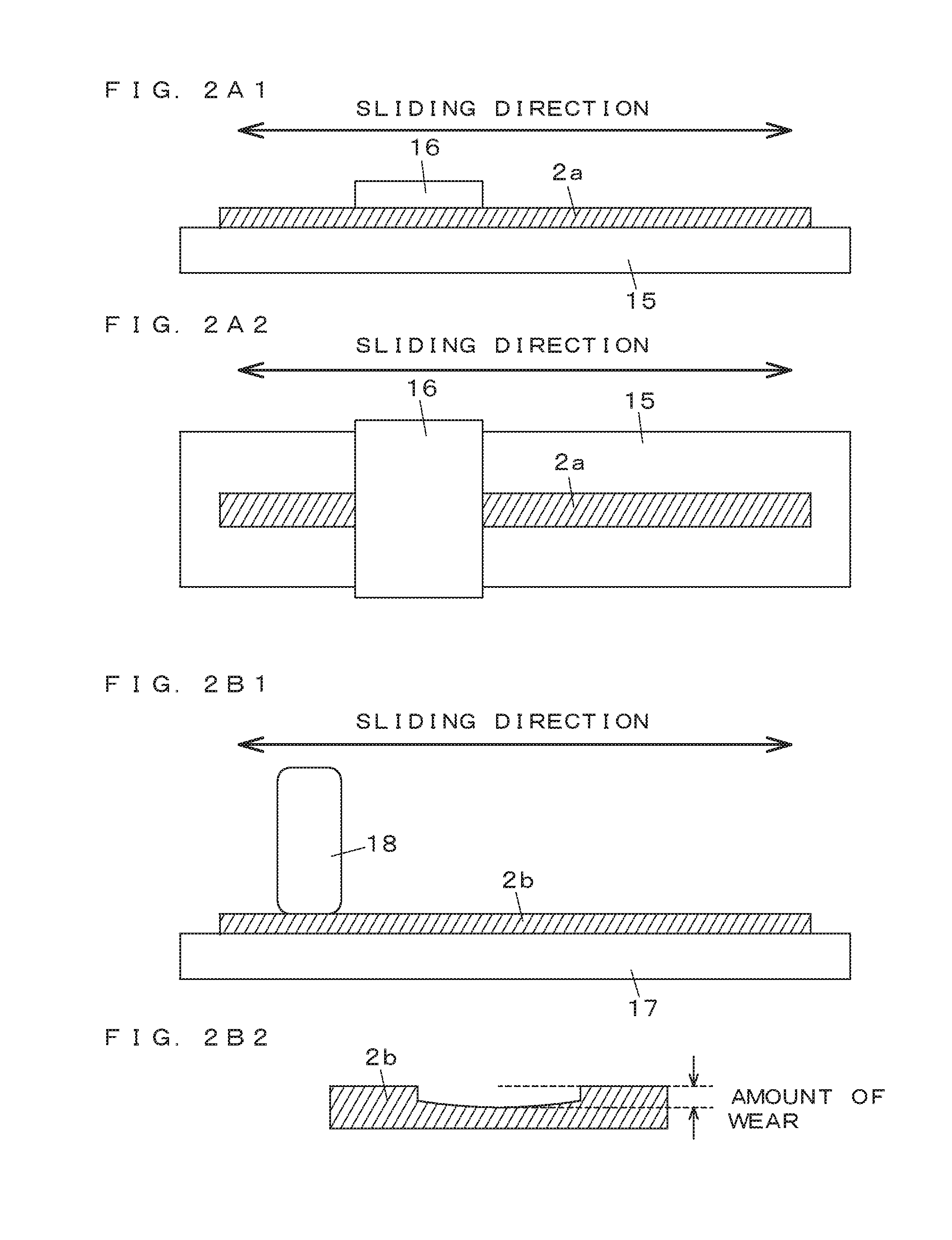Method of producing sliding material for weather strips
- Summary
- Abstract
- Description
- Claims
- Application Information
AI Technical Summary
Benefits of technology
Problems solved by technology
Method used
Image
Examples
examples
[0039]Olefin-based TPVs (sliding materials for weather strips) of Examples 1 to 7 and Comparative Example 1 of the respective formulations shown in the following Table 1 were produced. The values of the formulations represent the amounts in parts by mass of other materials blended with respect to 100 parts by mass of the total amount of PP and an EPDM.
TABLE 1ComparativeExample 1Example 1Example 2Example 3Example 4Example 5Example 6Example 7MaterialPP6464646464646464(parts byEPDM3636363636363636mass)PE particles0101040407086102Compatibilizing1010101010101010agentCarbon black 2.62.62.62.62.62.62.62.6MBCrosslinking44444444agentAntioxidant0.60.60.60.60.60.60.60.6Silicone5.96.4307.9303010.211.1compoundTotal Amount123.1133.6157.2165.1187.2217.2213.4230.3Amount of 4.84.819.14.816144.84.8Siliconecompound relativeto total amount(% by mass)Normal Tensile strength26.0good19.1good17.1good14.0good15.8good16.8good14.0good15.1goodPhysical[Mpa]PropertiesElongation [%]560good480good500good340good410...
PUM
| Property | Measurement | Unit |
|---|---|---|
| Percent by mass | aaaaa | aaaaa |
| Percent by mass | aaaaa | aaaaa |
| Percent by mass | aaaaa | aaaaa |
Abstract
Description
Claims
Application Information
 Login to View More
Login to View More - R&D
- Intellectual Property
- Life Sciences
- Materials
- Tech Scout
- Unparalleled Data Quality
- Higher Quality Content
- 60% Fewer Hallucinations
Browse by: Latest US Patents, China's latest patents, Technical Efficacy Thesaurus, Application Domain, Technology Topic, Popular Technical Reports.
© 2025 PatSnap. All rights reserved.Legal|Privacy policy|Modern Slavery Act Transparency Statement|Sitemap|About US| Contact US: help@patsnap.com



